Adventures with Godwin
Andrew Schwartz profiles National Calligraphy champion and man of mystery, senior Godwin Wang.
March 10, 2016
Senior Godwin Wang tells me that, even though they are friends, Mateo Seger is not to be trusted. Mateo Seger, also a senior, tells me that Godwin is “like a god to him.” It was in this very newspaper that Seger was quoted as saying, in regard to Godwin’s appointment to the ASWC senate, “I really hope that everyone realizes Godwin’s true potential and true worth, and they just make [Godwin] decide everything. It really would be in the interest of everybody if Godwin were just in charge. Sometimes we may not understand everything Godwin does, but Godwin works in mysterious ways.”
Godwin and I crossed paths early last semester, in a class on Human Computer Interaction. We were part of a team that developed a prototype for a journalism/news app. Godwin’s ways were not so much mysterious as impressive; we had made the prototype and then, unbeknownst to–and to the great delight of–our third team member and me, Godwin remade the whole thing at the last second on a superior platform just because he could.
As Seger’s endorsement implies, Godwin’s type is difficult to characterize. I had hoped to go on a journey with him. Some sort of weird and random venture–not necessarily an ambitious one–in a realm so divorced from either of our day-to-day worlds that the distinction between man and world would express itself in some kind of essential and uncorrupted way, as though I were isolating a gene, identifying and manipulating a singular variable.
Initially, we agreed on a nifty thrift shop in Milton Freewater called Lord’s Blessing. It’s a thrift shop’s thrift shop with pianos with yellowed ivory keys, dolls of bygone eras, one dollar T-shirts (progressive Oregonian tax code at work!) and a sharp, sweet musk unlike the mundanely chain-thrift perfume of any old Value Village.
Sadly, Godwin is a busy man of many engagements. In fact, his oral exam in Physics takes place the Thursday this story is published (good luck, Godwin). I inquire as to the nature of the exam. “People will ask questions about physics,” he says, “and I will answer them.” Here is one way of characterizing Godwin: Godwin is a pragmatic philosopher.
Intrepid staff photographer for The Pioneer, Christopher Belluschi, planned to document the journey to Lord’s Blessing. When the eager beaver arrived at the steps of the library to embark, we informed him that, in fact, he would be documenting a journey of more modest proportions. To begin, we would walk to Narnia.

Understanding Zhang Fa
Godwin, who is called Xun Wang at home, hails from a town in China called Qufu, situated in the Shandong province. He says that, to the great pride of the city, Qufu was a longtime home to Confucius. Even if your Chinese history base is as hollow as is mine, you may know Confucius as the most important philosophical figure in traditional Chinese culture.
Godwin is a fan of traditional Chinese culture. Godwin is such a fan that when he was fifteen he entered a competition for the National Calligraphy Association and won his age group.
Godwin says that Chinese calligraphy is “hard to explain. I feel like…calligraphy means a different thing in China compared to the calligraphy here in western cultures.” He continues, “I feel like calligraphy here is the art of writing beautiful scripts. I think that’s only a part of Chinese calligraphy. It’s kind of evolved with different stages of history back from a long time ago to modern times. I feel like, in general, practicing calligraphy is more like a kind of method of meditation…It’s kind of abstract because, if you use a paintbrush, you have the freedom to control how much force or motion you can put on your words when you are writing…so it kind of represents the characteristics of a person…You can see the person’s personality based on his calligraphy work.”
I show Godwin my toddler handwriting. What is his psychoanalysis? He reassures me. Chinese calligraphy is not merely a matter of immaculate script. “Writing like that”–here he points to my notes–“doesn’t mean that’s bad calligraphy, actually.” He shows me an example in his portfolio of cursive script: “It’s very free,” he remarks. Then he giggles.
The piece Godwin shows me is full of what appear to be mistakes. Strike-throughs, scribbles, weirdly curved characters. Ultimately, it isn’t the writing per se that determines the quality of a work of calligraphy (that only matters insofar as it reflects the accurate aesthetic), but rather the zhang fa, which Google translates as “art of composition,” (though Godwin says that is a terrible translation). The first thing to understand about zhang fa is that it can’t be replicated. The second is that balance is essential.
Godwin references his own practice scribbles. “At first, you probably thought these words and these marks are bad for the beauty of this work, but actually that’s very important for this work. So, like, someone tried to take off those marks and those words from the work when they were doing imitation, and they failed to reproduce the zhang fa of this work…Because that’s impossible. Because that’s the way the calligrapher expresses it.”
Through imitation, Godwin attempted to reproduce the zhang fa of the masters. Of the apparent mistakes, which are not his originally, but those of the man who first painted this piece so many hundred years ago, Godwin says, “It was there in the original work. That’s why I put that, because I couldn’t handle the zhang fa by myself. I only can follow the zhang fa of [a master].”
“Why can’t you do it yourself?” I asked. “Because I am not a master. I am not truly a master of this, since he did this for his whole life.” I still don’t get zhang fa. Godwin just says, “It’s hard to explain.”
Godwin’s point is that aesthetic beauty is the purpose, the art, of Chinese calligraphy. Yes, of course the prose or poetry being represented is relevant to the overall beauty and quality of a piece. But I protest, arguing that the quality of writing does not hinge upon the beauty of these symbols. “In traditional Chinese culture, it does,” Godwin replies.
Indeed, a visit to the website of the Metropolitan Museum of Art produces a nice synopsis of this alternative value system: “The limitation of the written Chinese language is also its strength. Unlike written words formed from alphabets, Chinese characters convey more than phonetic sound or semantic meaning. Traditional writings about calligraphy suggest that written words play multiple roles: not only does a character denote specific meanings, but its very form should reveal itself to be a moral exemplar, as well as a manifestation of the energy of the human body and the vitality of nature itself.”
Godwin says that “imitation is another way of creation.” My Western gut takes umbrage with the notion that you might call a piece an “original” whose meaning–and here “meaning” refers to the literal things in the world the characters represent– is not your own, but really just an old poem or something. So, does this mean that meaning and beauty are not just in the language, but also inherent in the symbols? What, exactly, does it mean to write a poem with paintings?
Except for during a brief period during which he lived in the Asian Studies house and was surrounded by interested parties, Godwin has not spent a significant amount of time practicing calligraphy since he has been at Whitman. He says that “space, time, and environment” are integral parts of the process: “At least you need to have…maybe a tea ceremony and some very light traditional Chinese music.”

However, Godwin admits, “You could [just] sit down and do it. But if you want to make great work, probably that’s not the way you do that.” Another giggle. “But sometimes people do great work when they are not very, like, calmed down.” He points to an imitation piece in his portfolio that he showed me earlier. He says that it’s one of the most famous running scripts (a popular form of calligraphy) in Chinese history. “The author did that work when he was actually drunk,” Godwin giggles again.
Finding Adventure
In Narnia, Chris directs a photo shoot. “One, two, three” he says, sheepishly admitting that his manner as a photographer is not a genuine one, but mandated by The Pioneer. Poses and profiles. Godwin and I even pretend to chat, hoping to produce spirited tableau for some candid shots. The inauthenticity of this sort of photo shoot, or even this sort of article for that matter, does not suit Godwin, who is an earnest soul.
As we continue into the Odd Fellows retirement campus, I fish for visions, life aspirations. “I am a very flexible person,” he says, after repeatedly avoiding to project upon the future. He doesn’t deal in terms of concrete goals. Grad school is in the cards, though. Electrical Engineering.
There is large structure just outside Odd Fells which resembles a bird cage for humans. It is adorned with bells. Godwin, ever-cautious, declines our urging that he enter the cage for what would be a rich and symbolic photograph. We discuss how weird it would be to be an old person. Godwin cautions that perhaps some of the old people in the vicinity might have their windows open.
We depart the compound so that we can converse in peace. Godwin, who plays the erhu, a two string violin-type instrument, says that he loves “to find out what is the basis for everyday life,” and so he studies physics.
Then we return to the library so Godwin can prepare for his orals. What is his research about? He tells me. I don’t get it. He nods in sympathy. “It’s hard to explain.”



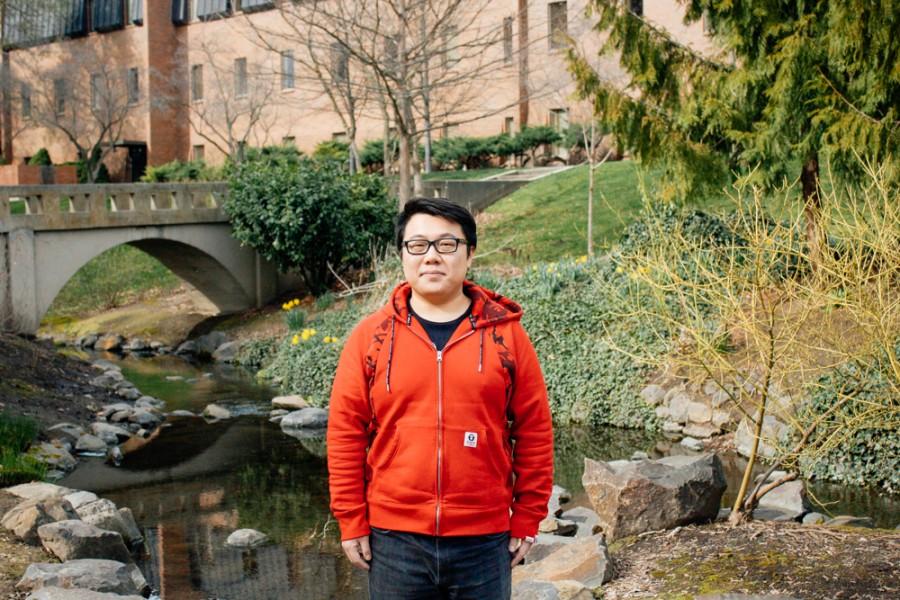


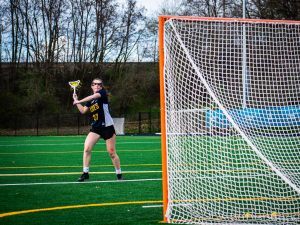
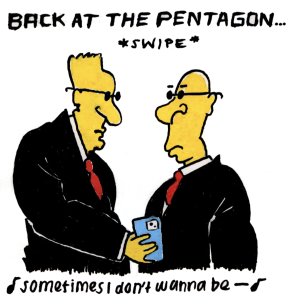
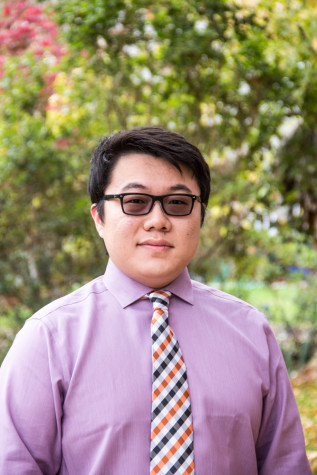
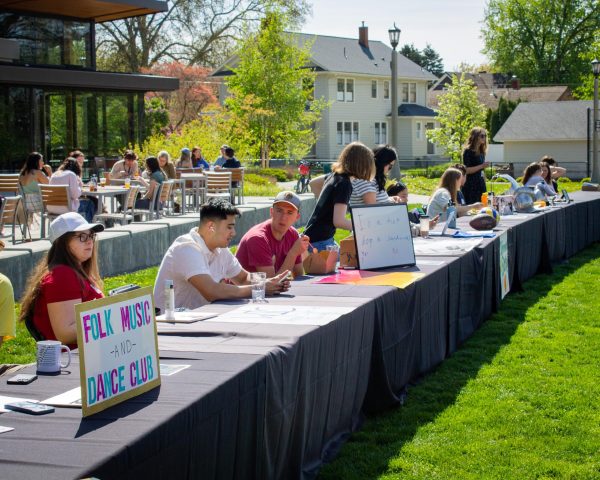
Nora • Mar 10, 2016 at 7:08 pm
Well written and thought-provoking. I’ve been living in China for the last 7 years and working am the co-founder at http://www.writtenchinese.com. Still, even after being literate in Chinese (finally) and taking several calligraphy classes myself I also haven’t been able to fully grasp the meaning behind Chinese calligraphy. Indeed it is “hard to explain”. Thanks for this article!